Here are the most popular animals that live in the desert.
There are a few types of desert that can vary in both temperature and the amount of rain it receives which are the two main building blocks of any biome.
But the animals that live in them are fairly similar. They all have adaptations to help them survive in desert conditions.
The desert biome covers roughly one-fifth (20%) of Earth’s surface. Each type usually has a surface layer of sand, gravel, or stone. The four main types of desert biomes are hot and dry deserts, semi-arid deserts, coastal deserts, and cold deserts.
There are only a handful of animals that can survive in some of the hottest, driest deserts across the world, but those animals that do survive there have some amazing adaptations to help them thrive where others struggle,
Here’s a quick list of some of the animals that live in the desert:
- Camel
- Scorpion
- Yucca moth
- Addax Antelope
- Roadrunner
- Antelope jackrabbit
- Saiga
- Tadpole shrimp
- Kangaroo rat
- Sand cat
- Giraffe
- Desert giraffe
- Fennec fox
- Ostrich
- Blue heron
- Vulture
- Planthoppers
- Gila monster
- Sandwinders
- Tree frog
- Ling cobra
- Desert tailed lizard
- Desert cottontail rabbit
- Pronghorn antelope
- Leopard tortoise
- Red-tailed hawk
- Desert tortoise
Most of the animals we describe here will likely be found in hot, dry deserts, or semi-arid deserts. But a few may dwell in coastal or cold deserts.
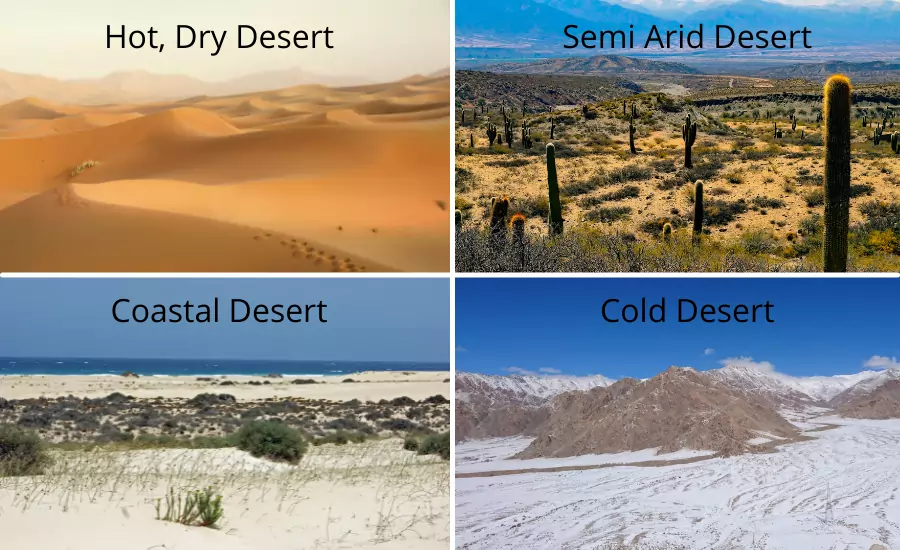
About animals that live in the desert
All of these animals have their own preference on which type of desert, and the specific area of the desert they like to dwell in.
They also have their own defensive characteristics and features to resist and deal with the harsh temperatures of the desert environment.
One of these specialized features is that many desert mammals are generally nocturnal or crepuscular.
This means they’re active mostly at dawn and dusk in order to avoid the intense heat of the day.
Let’s get into the list of desert animals…
1. Camel
Also called the “ship of the desert”, the list of animals that live in the desert undoubtedly should be starting with probably the most popular desert animal, the camel.
This animal is uniquely built to survive even in the hottest and driest of places on the planet. When we think of the desert, the camel is one of the first images we conjure up!
One of the aptest body features of a camel to suit its desert habitat comes from its hump.
All well-fed camels will have a hump (or two). The main role of the hump is to reserve fat, which the camel can then use when food and water are scarce in its habitat.
In less harsh or cool weather, a camel can go up to an incredible seven months without any food or water.
Apart from the hump, the camel also has a small head and ears that help it to cool down and escape the scorching air that enters the nostrils.
Its thick eyebrows and a double row of eyelashes are other defensive features that protect its eyes from blowing sands in the desert.
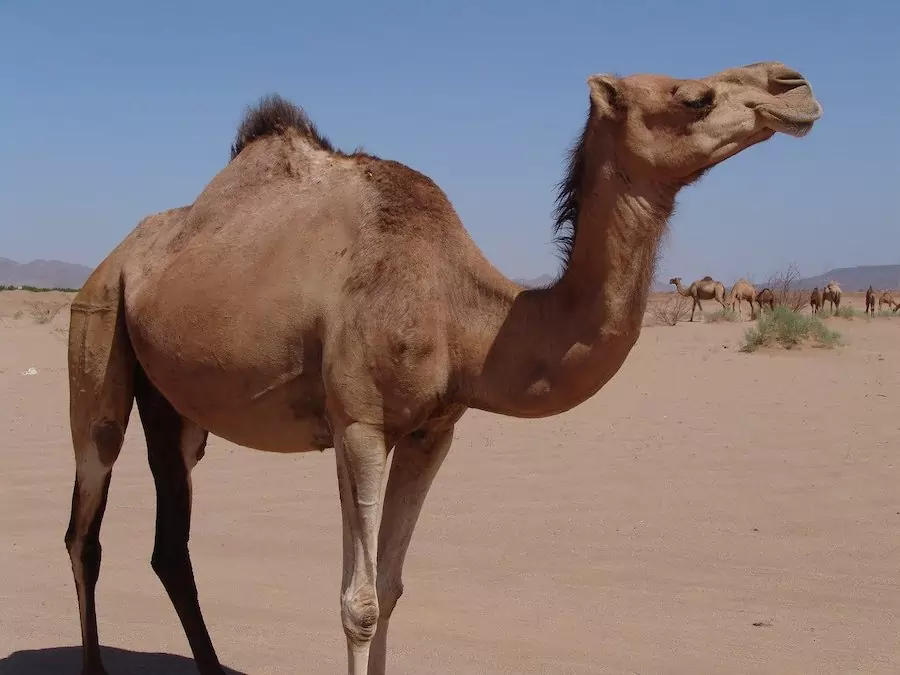
2. Scorpion
Somewhat related to spiders, mites, and ticks, this desert animal is an arachnid.
Just like the spider, scorpions also have eight legs, and like some spiders they also have venom. The venom is, however, delivered through a stinger in the tail.
The tail of a scorpion is segmented and is almost curved in its body.
They’re mostly found in deserts on every continent, except for Antarctica. There are about 2500 species of scorpions, all with their own unique features, and most of them are considered desert varieties and prefer to live in semi-arid regions.
A scorpion’s low food and water requirements allow them to survive even in the harshest environments.
One of their main defense strategies to protect themselves from other desert predators is their hard body casing, exoskeletons, and venom stingers.
Most scorpion predators are immune to scorpion venom, while some have learned the trick of getting rid of the venom or avoiding a sting when catching and eating them.
The deathstalker (Leiurus quinquestriatus) is an extremely venomous species of scorpion, found primarily in the Middle East. This scorpion is responsible for a large number of reported scorpion stings in North Africa and the Middle East.
Deathstalker venom contains large amounts of agatoxin which causes paralysis by inhibiting the release of neurotransmitters at neuromuscular synapses, leading to respiratory failure and eventual asphyxiation.
3. Yucca moth
The Yucca moth is a unique desert animal.
It is a small white moth variety that helps in pollinating a famous desert plant called “Yucca” and so the name the “Yucca Moth”. These moths inherit a color that helps them perfectly camouflage against the Yucca flower.
Interestingly the Yucca plant and the Yucca moth are codependent. In fact, they can’t survive without each other.
Each type of yucca plan has its own species of Yucca moth that is capable of pollinating it. These moths either belong to the Tegeticula or Parategeticula species.
While it doesn’t have a specific mechanism to live in deserts, one thing is for sure; it cannot survive without its host plant, the Yucca.
On average, these moths live for one year, and most of their life is spent within the pupal stage.
4. Addax Antelope
Addax antelope is a member of the genus Addax, which forms part of the family Bovidae.
Their range extends from the central African Sahara (Botswana, Niger, Senegal) to Sudan and possibly Nigeria.
The addax antelope is a critically endangered species since there are only about 500 of these animals living in its native habitat today.
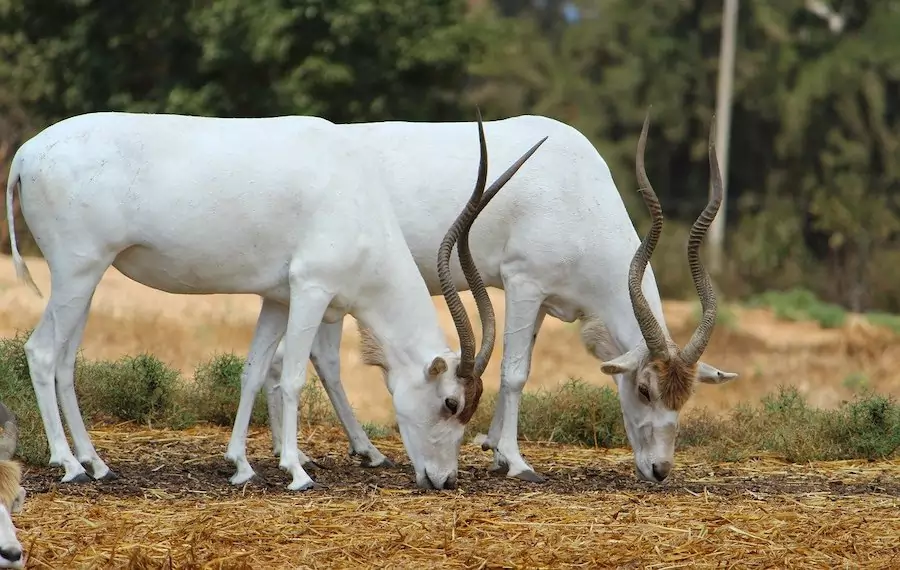
5. Roadrunner
More than just a cartoon character, the roadrunner is a type of ground cuckoo notable for its swiftness on land and is another member of the animals that live in deserts.
Roadrunners can run up to 20 miles per hour or even faster when circumstances call for it. They will also fly for short bursts when needed.
It’s hard to mistake noticing a roadrunner because they own a unique crest, long legs, and tails along with feathers in shades of brown, black, and white.
Their harsh habitats have made them omnivores, and they will pretty much eat anything they can find and handle.
For the most part, a roadrunner’s diet mainly consists of rodents, reptiles, small mammals, and insects. Most of the water in their diet also comes from the prey they eat.
An interesting fact about these desert dwellers is that they like to sunbathe. They will ruffle their back feathers to allow sunlight to warm the skin below their plumage.

6. Antelope jackrabbit
Also known as a type of hare, the antelope jackrabbit is mostly found in the deserts of Southern Arizona and the northwest area of Mexico.
Antelope jackrabbits prefer to live in areas that have desert shrubs that shade grasses and in other desolate regions.
This includes creosote bush flats, mesquite grassland, and cactus plains They mostly prefer drier open spaces, where they can easily see predators and flee when needed.
These animals are nocturnal, where they mostly rest in the shade of cactus or other plants during the day to cope with intense heat.
They won’t escape the heat by digging burrows, so they’re naturally expected to conserve energy and moisture by restricting their activities to the cooler hours of the day.
At night antelope rabbits travel up to several miles to find suitable food. Cacti and other desert plant varieties are what fill most of their water needs. But they also readily drink water wherever it’s available.
7. Saiga
Famous for its large roman nose with nostrils that point towards the ground, this desert animal is known as one of the most unique types of antelopes.
Their coping mechanism to survive in harsh temperatures comes from their downward-pointing nostrils that let the animal cool down the warm air that enters its body.
Its unusual nose structure also allows it to filter out dust in the hot climate.
The coat of Saigas is about 3.25 to 4.5 feet long and weighs between 57 and 150 pounds It grows much thicker and paler during the cooler seasons.
They also migrate long distances of up to 1000 kilometers to avoid snowfalls. They mostly migrate to the south during winter.
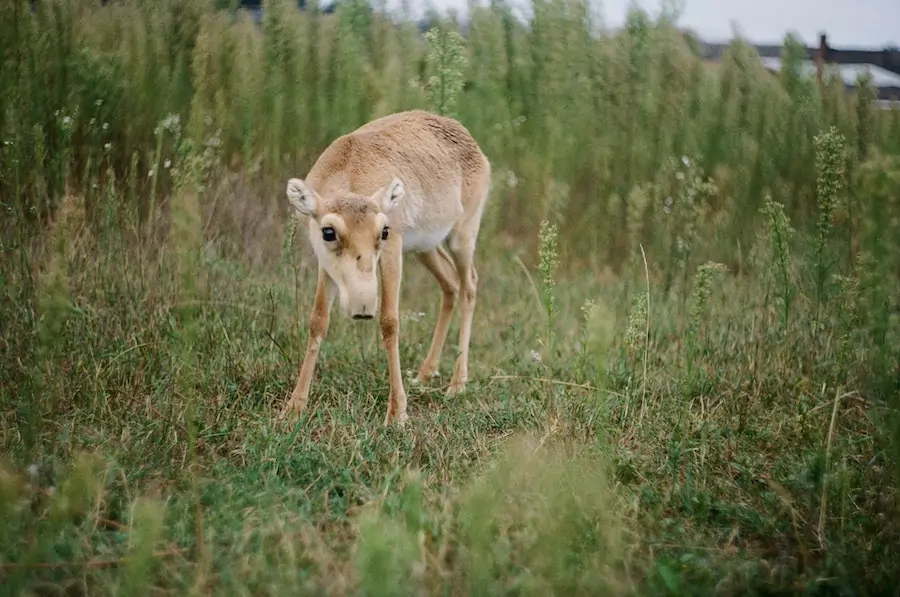
8. Tadpole shrimp
Although this animal is tiny among the many desert animals discussed here, it is still an amazing desert dweller.
Belonging to the family of the Triopsidade, this tiny translucent creature has not changed much since the Triassic era which began 252 million years ago.
These animals mostly survive by taking advantage of arroyos, which are dry stream beds found in deserts that fill up when it finally rains.
You can also find them in potholes and ephemeral pools that fill seasonally.
This pattern of seeking habitats to escape the harsh desert climate is named after a special behavior commonly referred to as “Escaping The Drought”.
These animals also exhibit an interesting egg-laying pattern, where they usually lay eggs in the mud at the bottom of water pools. But if they sense that the pool will dry up soon, they’ll place the eggs into a dormant state.
Once there is enough water in the pool, the eggs will hatch, and molt a few times until they become adults.
They do this through a process of nearby desiccation where a type of sugar called “trehalose” is produced for the eggs to stay in the water while keeping their shape undisturbed.
It’s believed that the eggs of these tadpole shrimps have been kept dormant for up to 50 years in the lab … and were still viable.
9. Kangaroo rat
Getting the name from its big and strong hind legs that resemble a kangaroo, this animal is not in any way related to kangaroos.
It has powerful legs that help these animals to hop over deserts, and the rat’s tail which is longer than its average 4-inch body helps with balancing.
For feeding, these animals burrow themselves into the sand in search of food.
They mostly feed on seeds of prickly pear, mesquite, and ocotillo which you might know better as “Jacob cactus”.
For habitats, they prefer stony deserts followed by clay, sand, and gravel deserts.
Kangaroo rats are perfectly adapted to life in the desert. They can survive without even drinking water …by getting only the moisture they need from the seeds they feed on.
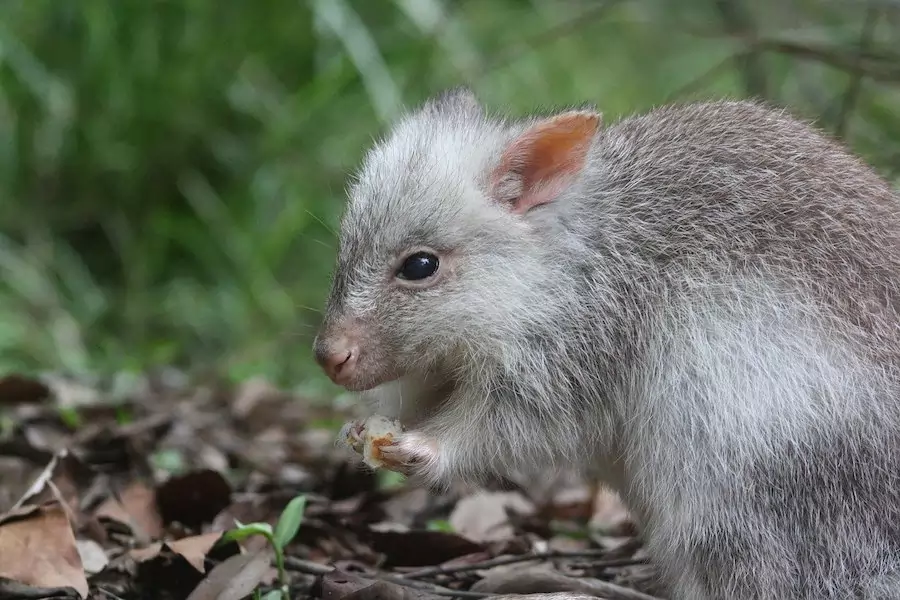
10. Sand cat
Just like many other desert creatures, even sand cats have evolved to need very little water to survive.
They get most of their moisture from food …which includes small prey like jerboas, reptiles, and birds. These prey are small enough for a wild cat as sand cats only weigh between 3.25 and 7.75 pounds.
They also inhibit several defensive characteristics that help them resist the harsh desert temperatures.
A main defensive characteristic is the leg soles that are covered in long and dense hair to provide insulation from the hot sands and help them walk for longer on the hot surface.
Similarly, they also have a thick body coat that insulates them from the intense heat and the intense cold of the desert environment.
Large eyes placed in a low setting in their head, with tapered ears is a desert-friendly feature that provides them with keen sight and hearing – for a habitat where prey can be scarce.

11. Giraffe
The long-necked giraffe is an herbivore (plant-eater) that feeds on leaves, shoots, twigs, and fruits of woody plants found in savannas – open grasslands with scattered trees – as well as acacia and Combretum trees in drier regions. They also eat shrubs if they are available.
Giraffes prefer to feed in the morning when it is cooler, but need to rest under the shade of trees during the hotter part of the day.
When temperatures soar into their 40°C (104°F) zone, they will seek out a mud wallow for relief and it is not uncommon to see herds of gazelle, wildebeest, and zebras also cooling off in these refreshing puddles.
This leads us to another type of giraffe.
12. Desert giraffe
The desert giraffe is a subspecies of the giraffe that lives in Northern Africa’s Sahara Desert. Unlike other kinds of giraffes, it has no markings on its body and has a light coat that turns from yellow to brown during the winter season.
We’re listing mostly hot and semi-arid desert-dwelling animals, but coastal and cold desert animals must also develop methods of conserving water. Antelopes such as gemsbok, kudu, and eland have long, narrow snouts and their flat molars help them graze on grasses without wasting any.
13. Fennec fox
A small member of the Canidae family, that are actually illegal to own in the United States. But are still prized for their unique ears, and because in general, fennec foxes are very cute.
Their large ears dissipate heat when placed upright on hot sand, while also providing greater auditory acuity when tilted towards likely prey in the desert environment. Not to mention additional shade in the sun.
Fennec foxes have a nictitating membrane or inner eyelid.
This transparent eyelid does not cover the whole eye and is used to protect against sand storms and other bright sunlight conditions while they’re out in the desert environment hunting for prey.
Find out more in our article on Facts about Fennec foxes.

14. Ostrich
The ostrich is the largest living bird in the world and they also happen to live in the desert.
Their large eyes are positioned on the sides of their heads, so they can see prey from a great distance away.
Unlike most other animals that burrow or hide when it’s hot out in the desert, ostriches actually lay down in a shallow hole they dig themselves, which is called a ‘thermal cover’, to protect their body from the hot sand.
The main reason ostriches are so well adapted to living in deserts is because of their ability to store large amounts of water in the ostrich digestive system.
This enables them to go without drinking for very long periods of time.
15. Blue Heron
The blue heron is a bird that is native to North, Central, and South America. It can be found in the desert regions of Mexico, Arizona, and California among other parts of North America.
The blue heron’s diet consists of small fish such as minnows and crayfish. But their diet can be quite varied, so find out exactly what a heron eats here.
Because they fish for their food, these birds usually live near sources of freshwater like streams or lakes.

16. Vulture
The vulture is a scavenger that is native to warmer regions of North and South America, Africa, Asia, and Europe. It can be found in deserts because it does not require a source of water to survive.
Vultures eat carrion (dead flesh), but they will also feed on fruit if it is available.
An interesting fact about vultures in the desert is that due to their large wings and lack of social activity, vultures need very few calories to survive – as low as half the amount needed by most animals of their size.

17. Desert Planthoppers
Planthoppers belong to the family Cicadidae. They are considered tropical and also occur in deserts, grasslands, and forests.
They feed on plant juices using their piercing and sucking mouthparts.
Desert planthoppers tend to lay their eggs in the soil, while other members of this family tend to lay them on plants or bark.
Desert planthoppers exhibit a type of camouflage known as countershading. They are light underneath and dark on top, allowing them to blend into their surroundings.
Desert and other flat-walking planthoppers can often be seen following each other in a single file. They walk with their heads down, which makes them resemble leaf litter or a twig on the ground.
Do these strategies help desert planthoppers avoid predators? Not necessarily! Predators such as bats and tree frogs are familiar with the best ways to catch insects.
But when a predator comes close – and given the chance, desert planthoppers can fly away from danger.
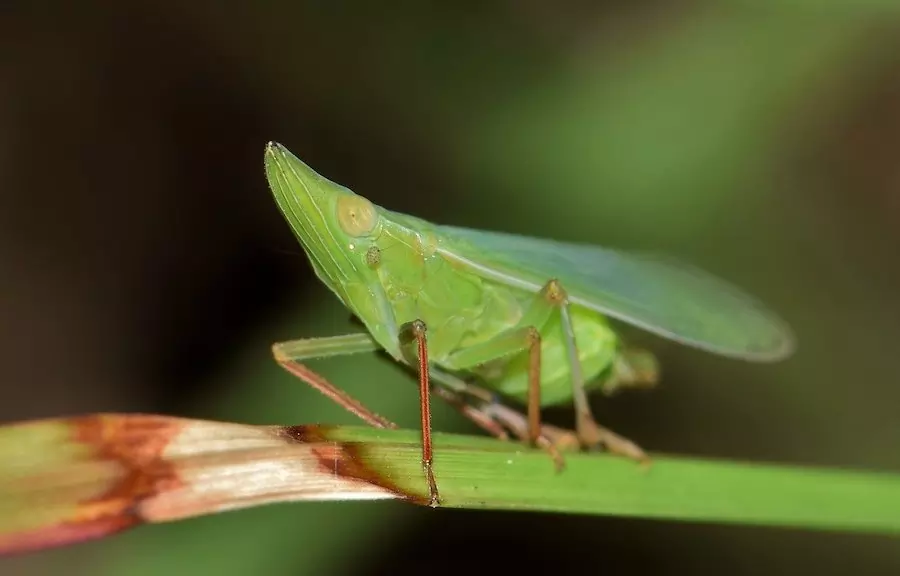
18. Gila Monster
A Gila monster is a type of venomous lizard that dwells in dry desert regions. Native to the United States and Mexico, it’s often found in rocky hillsides.
Although the Gila monster is venomous, its potential prey is both numerous and diverse.
During dry seasons when food is scarce, this lizard lies motionless, often for weeks at a time under rocks or fallen trees. It sometimes buries itself partially in loose soil with just its eyes visible.

19. Sandwinders
Known best as a snake that moves through sand, the Sandwinder is another popular desert animal.
They got their name from the unique form of side-stepping locomotion that they have adapted for moving across loosely packed desert sands.
There are many types of sidewinders that inhabit differing desert locations. The desert death adder species can be found in Angola and Namibia; the Saharan horned viper is mostly inhabited in northern Africa, the Arabian Peninsula, and the Levant.
This desert creature is known for its horns located over its eyes, and it has scales in colors that almost camouflage them against the desert sand.
Sandwinders prefer to stay in rockier parts of deserts and can also be commonly found in and around oases.
Although their colors blend well with the desert sand, the tip of the tail is black. This unfortunately makes them stand out somewhat from the sand, making it easy for their predators to spot them.
While they are venomous creatures, they are shy and mostly nocturnal, so it poses fewer risks to humans in the daytime.
At night they become active and roam for long distances, smelling the air and searching for prey.
Their specialized wiggling locomotion characteristic is also used to bury themselves in the sand in the shade of large bushes and trees.
They use this as a defense mechanism to protect themselves from intense desert temperatures and from the eyes of predators.
Some deserts like the southwestern deserts of the US, despite being extremely hot in the summer, will turn cool in winter.
During this time, these animals hibernate to cope with the low temperature. They mostly hibernate in abandoned rodent burrows.
20. Tree Frogs
There are many different varieties of tree frogs, and they’re not normally native to desert habitats. But they have been known to adapt when necessary.
Though most tree frogs live in tropical rain forests, desert tree frogs can cling to trees and survive extreme dry spells by burrowing into the ground.
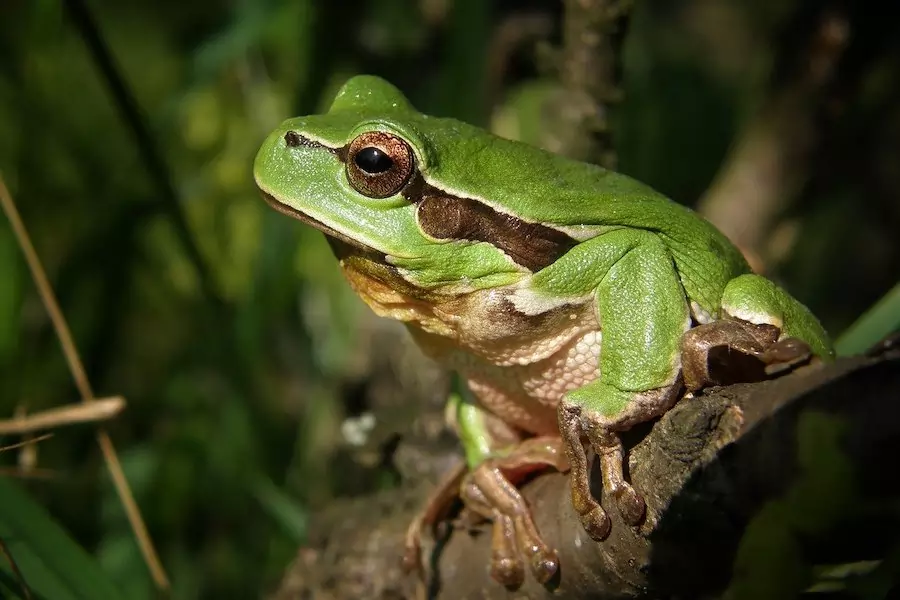
21. Ling Cobra
The Ling Cobra is a species of venomous snake. It is one of the most highly venomous snakes, and it’s considered very dangerous to humans.
They are native to the desert regions of northwest India, but they are also found in the jungles of southern India.
Ling cobras defend themselves using mostly sound and posturing. They hiss loudly and thrash about, but unless you stand within striking range this isn’t really an imminent threat.
22. Desert Tailed Lizard
The desert-tailed lizard is a species of lizard found in Western North America. It’s also known as the horny-tailed dragon and by its genus Brachylophus. These lizards are diurnal, meaning they’re active during the day.
the desert-tailed lizard barely needs to drink water, as it’s adapted with the ability to photosynthesize its own food.
Desert-tailed lizards are predators of insects and other invertebrates.
23. Desert Cottontail Rabbit
The desert cottontail is a New World rabbit, which means it’s not native to Europe or Asia. It used to be considered part of the same species as the eastern cottontail but now has been categorized as a separate species.
The desert cottontail is found throughout the southwestern United States and Mexico, as well as in parts of Central America from southern Mexico through Guatemala, El Salvador, and Honduras.
It inhabits three kinds of habitat: desert shrublands, mixed grasslands with brush or juniper, and lowland brushy areas.
It also occupies man-made habitats such as vacant lots, irrigation ditches and fields, and roadsides. here’s what eats rabbits.
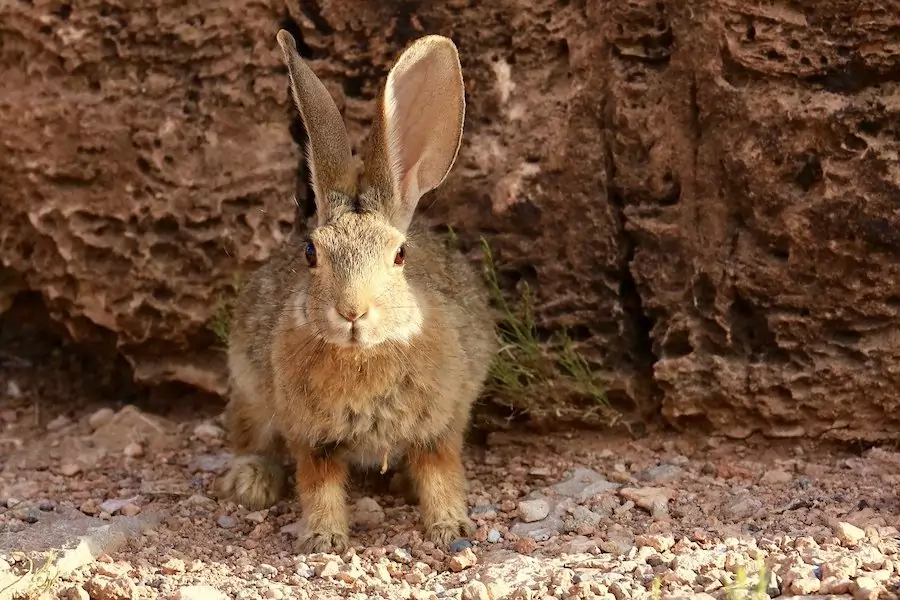
24. Pronghorn Antelope
The pronghorn is the only surviving member of the family Antilocapridae. This species now roams in parts of Wyoming, Utah, Colorado,
Arizona, and New Mexico.
They have a tan body, white rump, and brown faces. The horns are about 14 inches long. When running the pronghorn can reach speeds of 60 mi/h (96 km/h).
Pronghorns are mainly active during the early morning or late evening hours to avoid high temperatures in the summer months.

25. Leopard Tortoise
The leopard tortoise lives in grasslands and deserts with dry, sandy soil. Although it prefers these open spaces, it is not limited to them – it can also be found in forests and grasslands where there are dense bushes.
It lives in the desert, where it digs deep burrows to escape the day’s heat. It also shelters in crevices between rocks or under fallen logs and roots.
26. Red-tailed Hawk
The red-tailed hawk is a bird of prey found in North America, Central America, South America, and Eurasia. This bird of prey spends a lot of time soaring and circling in the air, looking out for prey.
The red-tailed hawk is a bird of open country – it prefers to live close to towns and agricultural areas where there is plenty of small wildlife.
In the desert, it can be found near cliffs or on top of rocky hills from which it has a good view over the surrounding land.

27. Desert Tortoise
The desert tortoise is a reptile that is native to the southwestern area of North America. It’s considered an endangered species: only about 15,000 of them still exist today.
The desert tortoise, when in danger from predators, can burrow itself up to a foot deep in a matter of seconds.
It has been known for tortoises to go without food and water for two or more years in order to survive through long droughts.
When food and water become available, the tortoise will return to its normal weight in as little as 48 hours.
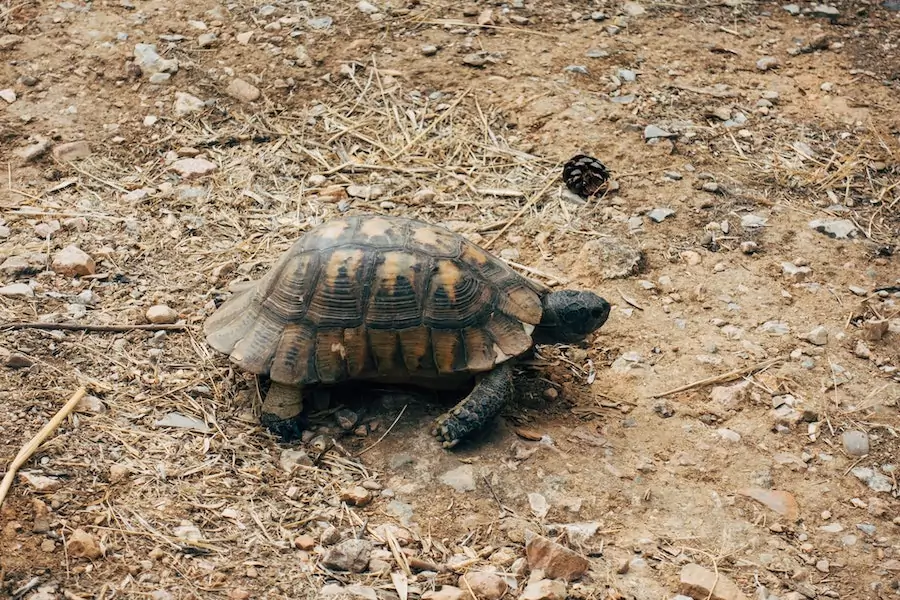
More …animals that live in the desert
There are lots more animals we could add here that live in the desert. But this list proves that while many think a desert biome is an inhospitable place, it is in fact teeming with life.
All types of flora and fauna have become super-adapted to this harsh environment.
Now discover animals that live in the tundra.

